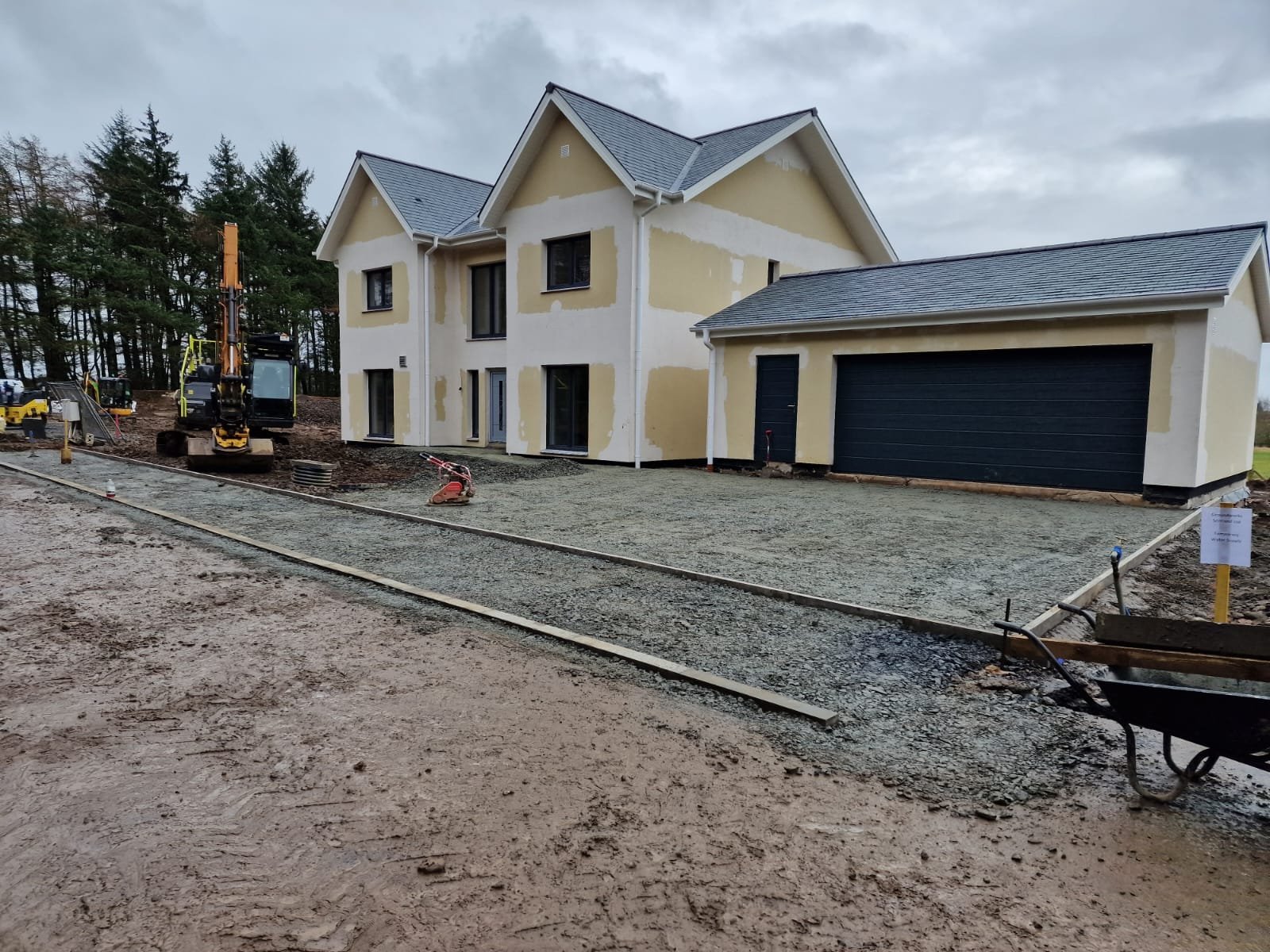
Custom & Self-Build Blog
Self-build and Custom build. What is the Difference?
You will often see these terms used incorrectly in articles. Self-build and Custom build are two completely different approaches and ways to construct your own home. Here are the key differences between them:
Self-build:
The homeowner is involved in every aspect of the process, from design to construction.
They may act as their own project manager or hire a professional to oversee the project.
The homeowner is responsible for sourcing materials, hiring contractors, and managing budgets and timelines.
It requires significant time, effort, and expertise, but can result in a highly personalized home.
Custom build:
The homeowner works with a custom build company or developer to design and construct the home.
The company takes care of planning, permitting, sourcing materials, hiring contractors, and managing the project.
Homeowners have input in the design but don't need to manage the construction process.
Custom builds offer a balance between personalisation and convenience, with less stress for the homeowner.
Benefits of custom build over self-build:
Less time-consuming: Custom builds often have a more streamlined process, as the custom build company handles many of the tasks involved.
Lower risk: Custom build companies have experience and expertise, which can reduce the chances of costly mistakes and delays.
Easier financing: Lenders may be more willing to finance a custom build because it's less risky than a self-build.
Professional guidance: Custom build companies provide expert advice and guidance, making the process less daunting for homeowners.
Benefits of custom build over buying from a typical national house builder:
Personalisation: Custom build homes can be tailored to your needs, preferences, and lifestyle, resulting in a more unique and personalized home.
Quality: Custom builds often use higher-quality materials and craftsmanship compared to mass-produced homes, leading to better durability and longevity.
Energy efficiency: Custom build homes can incorporate energy-efficient features and sustainable materials, leading to lower energy bills and environmental impact.
Control over location: Custom build homes often offer more choice in terms of location and plot size, allowing homeowners to select the perfect spot for their new home.
The Rise of Modern Methods of Construction (MMC) in Housebuilding: Pros and Cons for Developers
Introduction
The construction industry has been experiencing a paradigm shift in recent years, driven by the need for rapid, efficient, and sustainable housebuilding solutions. Modern Methods of Construction (MMC) have emerged as a response to this demand, offering developers and home buyers a range of benefits while also presenting some challenges. This article explores the various aspects of MMC in housebuilding, highlighting the advantages and disadvantages for both developers and home buyers, and providing a comprehensive understanding of this innovative approach.
Modern Methods of Construction (MMC) Overview
Modern Methods of Construction encompass a broad spectrum of innovative housebuilding techniques and materials that deviate from traditional methods, focusing on off-site manufacturing, precision engineering, and technology integration. MMC techniques include:
Modular Construction: Pre-fabricated volumetric units built in a factory and assembled on-site.
Panelized Systems: Wall, floor, and roof panels manufactured off-site and erected on-site.
Hybrid Systems: A combination of modular and panelized systems, offering flexibility in design and construction.
Structural Insulated Panels (SIPs): High-performance building panels made of an insulating foam core sandwiched between two structural facings.
Cross-Laminated Timber (CLT): A lightweight, yet strong and sustainable building material made from layers of timber glued together.
Benefits of MMC for Developers
A. Time and Cost Savings
One of the most significant benefits of MMC for developers is the potential for time and cost savings. Off-site manufacturing and assembly of components streamline the construction process, reducing labor costs and allowing for tighter scheduling. This results in shorter construction times, earlier occupancy, and quicker return on investment. Additionally, waste reduction and improved quality control at manufacturing facilities contribute to cost savings.
B. Improved Quality and Consistency
MMC techniques often result in higher quality and more consistent end products, as factory-controlled environments minimize the impact of external factors such as weather, worker skill level, and site conditions. This ensures that components are manufactured to precise specifications, reducing defects and increasing overall building performance.
C. Sustainability and Energy Efficiency
MMC techniques generally promote sustainability and energy efficiency by utilizing innovative materials, reducing waste, and minimizing the environmental impact of construction. For example, SIPs and CLT provide excellent thermal performance and air-tightness, reducing energy consumption and greenhouse gas emissions. Furthermore, off-site manufacturing processes reduce waste, noise, and disruption at construction sites.
D. Greater Flexibility and Scalability
MMC allows for greater design flexibility and customization, as components can be easily modified to accommodate specific client needs or site conditions. Moreover, the scalability of MMC methods enables developers to respond quickly to market demand, increasing or decreasing production as required.
Downsides of MMC for Developers
A. Initial Investment and Cost Uncertainty
The implementation of MMC requires a significant initial investment in manufacturing facilities, technology, and skilled labor. Additionally, as MMC is still a relatively new approach, cost uncertainty exists, making it difficult for developers to accurately forecast budgets and returns on investment.
B. Limited Skilled Labor and Industry Acceptance
The construction industry has historically been slow to adapt to new technologies and methods, and MMC is no exception. Limited availability of skilled labor and reluctance to embrace MMC among industry stakeholders may present challenges for developers seeking to implement these techniques.
C. Regulatory and Compliance Issues
Navigating building codes, regulations, and compliance can be challenging with MMC, as authorities may be unfamiliar with innovative materials and construction methods. This can result in delays and additional costs as developers work to meet regulatory requirements.
D. Transportation and Site Constraints
Transporting large pre-fabricated components to construction sites may prove difficult in certain locations, particularly in urban areas with limited access or space restrictions. This can lead to increased transportation costs and logistical challenges. Additionally, site constraints such as uneven terrain, poor soil conditions, or proximity to existing structures may limit the applicability of MMC techniques.

